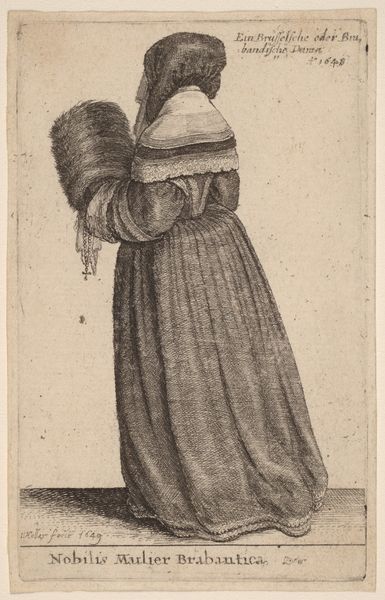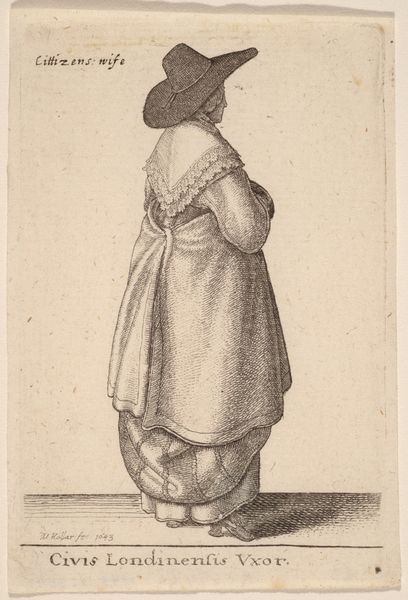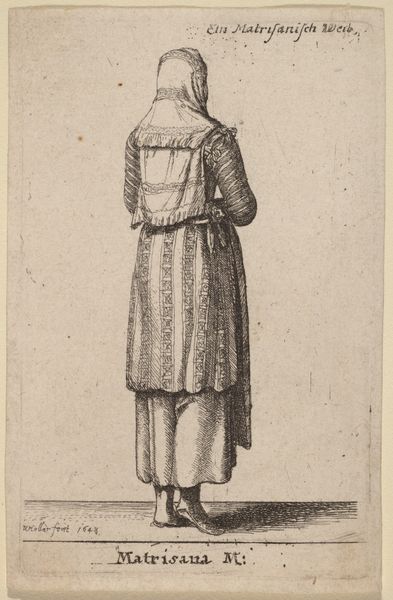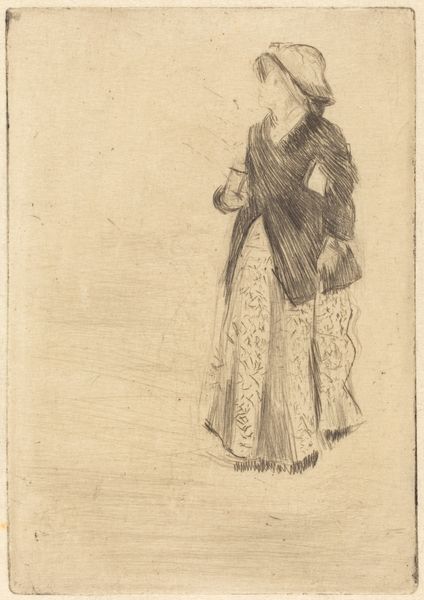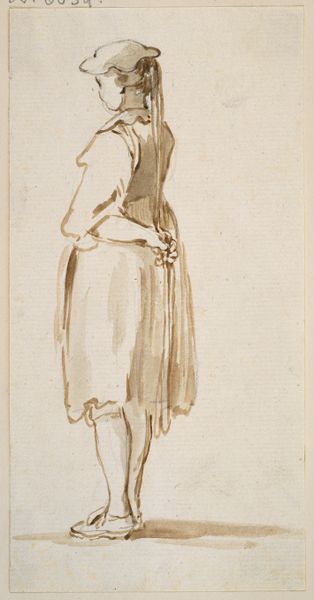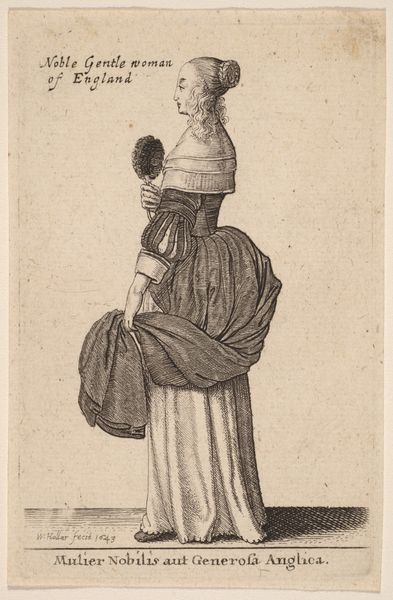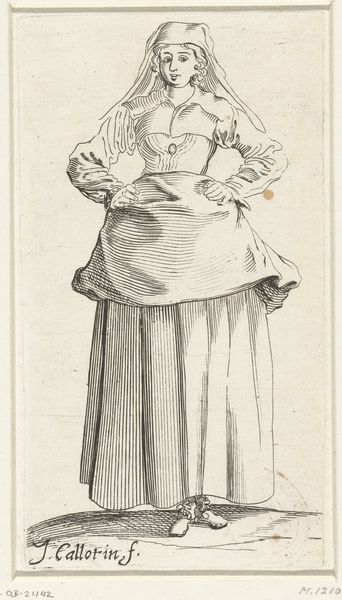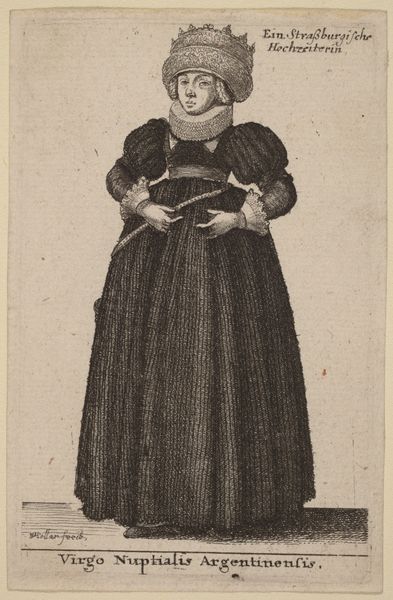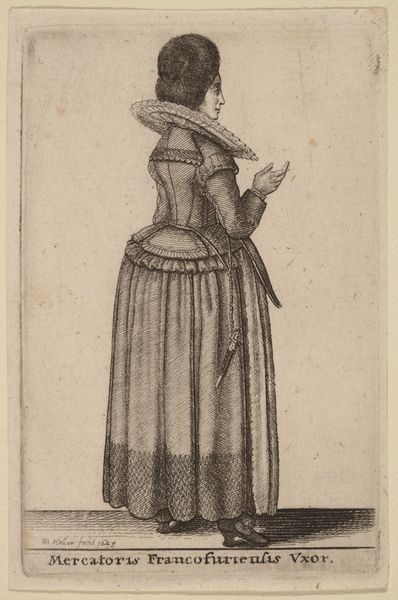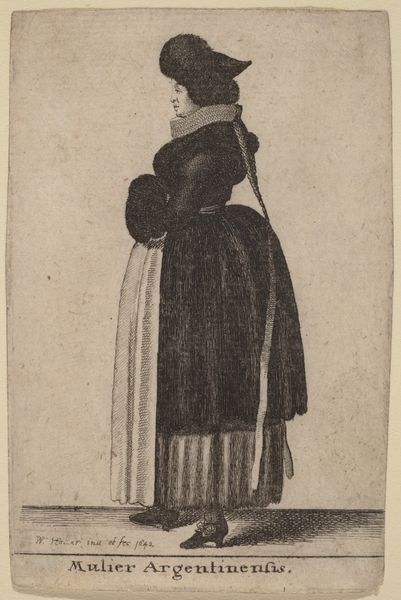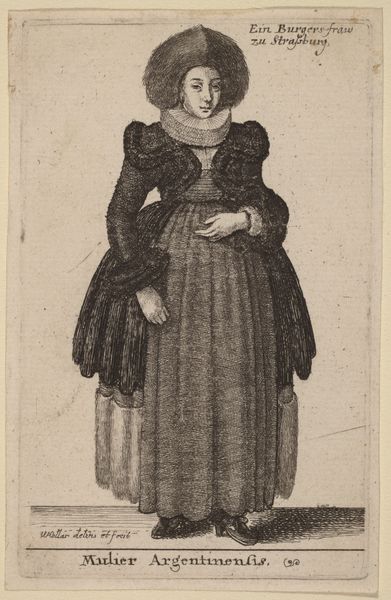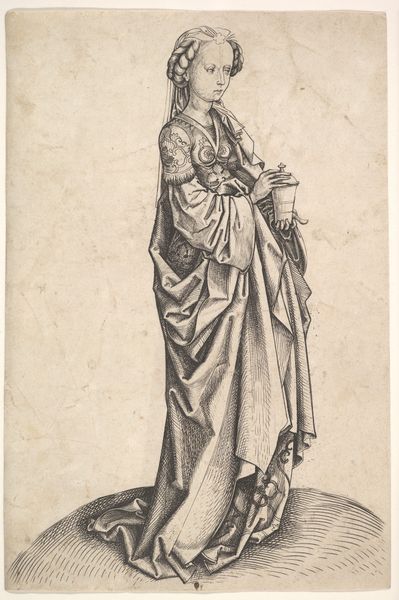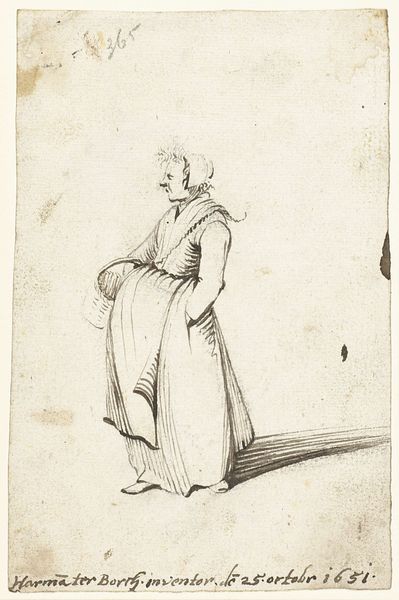
drawing, print, etching
#
portrait
#
drawing
# print
#
etching
#
caricature
#
15_18th-century
#
men
#
line
#
genre-painting
#
profile
Dimensions: plate: 6 1/4 x 4 1/4 in. (15.8 x 10.8 cm) sheet: 8 13/16 x 5 7/16 in. (22.4 x 13.8 cm)
Copyright: Public Domain
Editor: Right, next up we have "Doctor Gruel," a caricature etched by Matthew Darly in 1771. The first thing that strikes me is just how severe he looks. He has a sharp nose and a ridiculously oversized wig. It's funny, but also kind of… unsettling? What do you see in this piece? Curator: Oh, unsettling is absolutely the right word! Darly’s caricatures are little social daggers. Look at the relentless detail in the fabric of his robe – all those etched lines emphasizing the man’s imposing bulk, almost suffocating him. And that wig, perched precariously – it’s less a symbol of status, more a precarious joke, wouldn't you agree? It speaks volumes about how appearances can be deceiving. It reminds me of the story of someone wearing so many rings they couldn't lift a teacup...what are we actually looking at, beyond the surface? Editor: That's a great point. It's like Darly is stripping away any real sense of dignity. What kind of “doctor” do you think he is satirizing here? Is “gruel” a clue, perhaps? Curator: Precisely! Gruel suggests weakness, something thin and watery. In 18th-century England, doctors weren’t always seen as learned healers. Sometimes they were charlatans, preying on the vulnerable. And that title becomes so delightfully ironic! Editor: It's a stark commentary, delivered with such subtle artistry. I'll never look at a caricature the same way! Curator: Good! Because true caricature is more than just a funny face, isn't it? It's about peeling back the layers to expose a little truth, or perhaps a dark joke.
Comments
No comments
Be the first to comment and join the conversation on the ultimate creative platform.
